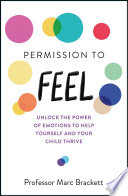

Emotional awareness is the foundational concept in 'Permission to Feel.' The author, Marc Brackett, emphasizes the importance of recognizing and understanding our emotions as a first step towards emotional intelligence. He argues that many people are unaware of their emotional states and how these feelings influence their decisions, behavior, and interactions with others. Brackett introduces the RULER framework, which stands for Recognizing, Understanding, Labeling, Expressing, and Regulating emotions. By cultivating emotional awareness, individuals can enhance their interpersonal relationships and improve their mental well-being. This awareness allows for a more profound understanding of not only oneself but also others, fostering empathy and collaboration in various environments, including workplaces and schools.
Continue readingThe RULER framework is a systematic approach to developing emotional intelligence, and it serves as a central theme in the book. Each component of RULER is essential: Recognizing emotions involves identifying feelings in oneself and others; Understanding emotions requires grasping the causes and consequences of these feelings; Labeling emotions means using precise vocabulary to describe them; Expressing emotions involves sharing feelings appropriately; and Regulating emotions is about managing one's emotional responses. This framework is not just theoretical; it has been implemented in various educational settings and workplaces, demonstrating its practical application. By using RULER, individuals can create a culture of emotional awareness, leading to better communication, reduced conflict, and enhanced well-being.
Continue readingBrackett discusses the significant impact that emotions have on learning and performance. He argues that emotions can either facilitate or hinder cognitive processes. Positive emotions, such as joy and curiosity, can enhance creativity and motivation, while negative emotions, like anxiety and sadness, can impair focus and memory. This idea is particularly relevant in educational settings, where students' emotional states can greatly affect their academic success. Brackett highlights research showing that emotionally supportive environments lead to better learning outcomes. Thus, fostering emotional intelligence in schools and workplaces is crucial for unlocking potential and achieving success. Understanding this relationship can help leaders and educators create environments that nurture emotional well-being.
Continue readingThe concept of emotional culture is another pivotal idea in 'Permission to Feel.' Brackett argues that every organization has an emotional culture that influences how emotions are expressed and managed. This culture can either promote emotional well-being or contribute to stress and burnout. Leaders play a critical role in shaping this culture by modeling emotional awareness and creating policies that support emotional health. By prioritizing emotional culture, organizations can improve employee satisfaction, retention, and productivity. Brackett provides examples of companies that have successfully implemented emotional intelligence initiatives, demonstrating the tangible benefits of fostering a positive emotional culture. This idea encourages leaders to reflect on their organizational practices and consider how they can cultivate an environment that values emotional health.
Continue readingBrackett offers practical strategies for individuals and organizations to develop emotional intelligence. These strategies include mindfulness practices, emotional check-ins, and creating safe spaces for emotional expression. Mindfulness helps individuals become more attuned to their emotions, while emotional check-ins encourage regular reflection on one's feelings. Creating safe spaces allows individuals to express their emotions without fear of judgment, fostering a sense of belonging. Brackett emphasizes that developing emotional intelligence is an ongoing process that requires commitment and practice. By implementing these strategies, individuals can enhance their emotional skills, leading to improved relationships and overall well-being.
Continue readingEmotional validation is a crucial concept discussed in the book. Brackett highlights the importance of acknowledging and validating one's own emotions and those of others. Validation helps individuals feel understood and accepted, which is essential for emotional well-being. In many cultures, emotions are often dismissed or stigmatized, leading to feelings of shame or isolation. By practicing emotional validation, individuals can create supportive environments that encourage open communication and emotional expression. Brackett provides examples of how validation can be applied in various contexts, such as parenting and leadership, illustrating its transformative power in fostering connection and empathy.
Continue readingIn the concluding sections of the book, Brackett discusses the future of emotional intelligence in an increasingly complex and technology-driven world. He argues that as society becomes more interconnected, the ability to understand and manage emotions will be paramount. Emotional intelligence will be essential for navigating challenges such as workplace diversity, remote work, and mental health issues. Brackett calls for a collective effort to prioritize emotional intelligence in education, policy-making, and organizational practices. He envisions a future where emotional intelligence is recognized as a critical skill for success, urging readers to embrace the journey of emotional growth.
Continue reading